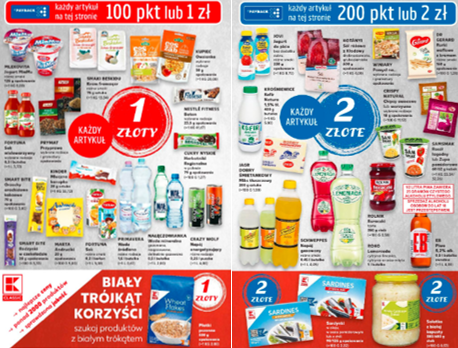
1. NEW INSTALLMENT OF “PRICE WARS”
Deteriorating consumer sentiment triggered an immediate change in the marketing activities of leading retail chains. The first significant change was the new Lidl campaign, which focused on the promotion of prices for 300 basic products. Similar price actions were observed in the activities of other chains: Carrefour froze the prices of 150 products, while Biedronka guarantees the lowest price for 100 of its own brand products. The above strategy is also observable in newspapers, one of the most important means of communication. Networks – responding to clients’ financial needs::
- Discounted prices for essential products (Selgros);
- Introducing short-term promotions while stocks last for an attractive price – (e.g. barbecue sausage in Biedronka);
- Advertising products “for grosze” – 1 PLN or 2 PLN (Kaufland);
- Adding “freebies” to purchases, generating traffic before the May weekend – e.g. grill briquettes offered by Lidl.

2. CHANGES TO THE CONTENT AND LAYOUT
An interesting change that has been observed for some time, which was intensified by the pandemic – is dedicating the entire page of the newsletter only to single fresh products or own-brands (a standard page usually contains a dozen or so items). For example, Lidl or Biedronka adopted such a strategy by promoting fresh vegetables and fruit on its newspaper pages. Such action is primarily to support traffic, which during the pandemic was affected by the rise of local stores popularity.
In addition to numerous promotional mechanisms, there is also an emphasis on the Polishness and locality of products, probably associated with a strong consumer trend supporting.Polish producers. Based on this trend, Biedronka launches the campaign “Time to support small producers”. Within this framework, producers who have previously operated locally or did not have a sufficient scale of operation can start cooperation at the regional level, with deliveries, e.g. to one distribution centre.

3. EMPHASIS ON BUYERS’ SAFETY
Most networks do not offer e-commerce. At the beginning of the pandemic, some of them – offering home shopping – experienced major distribution problems at a specific time. Columns promoting safety when shopping in stores and information about available security measures at the store level have become a permanent element of the newsletter. Some of the retailers – e.g. Carrefour hypermarkets – have met consumers during this challenging period, enabling them to order and pick up purchases without having to enter the store. Another – though a niche idea – are also ready-made sets of products that you can buy or order directly at home. The newsletter offer includes surprising, yet unprecedented products, e.g. disinfecting gel or disposable masks at promotional prices.

